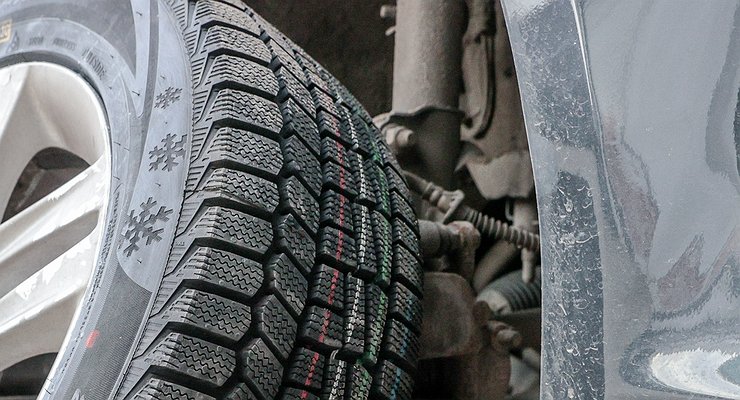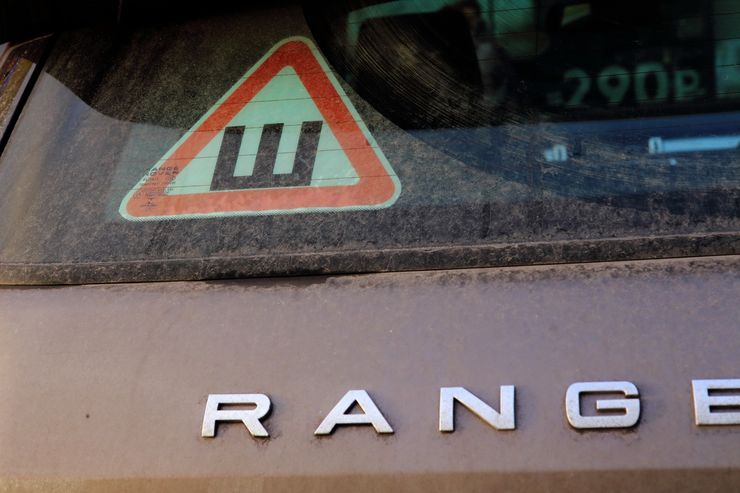How the traffic police issue fines for winter tires in winter
- November 28, 2022
- 0
Most motorists are sure that if their car is “shod” for the season, then they should not expect any claims about tires from the traffic police. The AvtoVzglyad
Most motorists are sure that if their car is “shod” for the season, then they should not expect any claims about tires from the traffic police. The AvtoVzglyad

Few motorists realize that getting fined for driving on winter wheels in winter is as easy as peeling pears. This is especially true for those who are inclined to all sorts of ways to minimize the cost of tires. Recently, this model of behavior has become widespread – after all, it is becoming more and more expensive to maintain a car. For example, before “changing shoes”, a driver sees that a pair of tires from a set of winter wheels is already worn out and asks for a dump. And the second pair is still fine. It happens: in some front-wheel drive cars, the front tires wear much more intensively than those on the rear axle.
In this case, in order not to buy a completely new set of four wheels, the car owner buys only a few – instead of worn ones. And often – “on occasion, for little money” – they buy studded tires as a substitute for non-studded ones. Or vice versa. Most drivers will say that there is nothing wrong with this – in terms of driving on snow and ice. Meanwhile, traffic regulations require vehicles to have either all studded wheels or all Velcro wheels. If a traffic police officer finds such a violation, he draws up a protocol under part 1 of art. 12.5 of the Code of Administrative Offenses of the Russian Federation. The penalty for this is not more than 500 rubles.
But at the same time, an instruction is also given to the driver to “fix the malfunction”. If a citizen subsequently catches the eye of the traffic police again with the wrong winter tires, he can already be put on under Art. 19.3 of the Code of Administrative Offenses of the Russian Federation for “disobedience to the lawful demand of an employee …” And according to this article, you can be arrested for 15 days.
Another seemingly harmless offense is also usually associated with “economics”. Very often, at the beginning of the winter season, the car owner looks at the tires that are already noticeably worn out and decides: I’ll drive them this winter, and then throw them away – when they finally wear out. We all remember that as long as the tread depth is more than 2 mm, rubber is considered normal … Yes, but this only applies to “summer”. For winter tyres, the wear limit is set at a residual depth of 4 mm! So, “on” half-bare winter tires, the car owner also “walks” under a fine and hit “for a day”.
And supporters of “tuning” winter do not like much – from the point of view of the law. If you put tires that are clearly larger and wider than indicated in the car’s manual (to increase cross-country capability!), any traffic police officer, if desired, can easily put you on under the same first part 12.5 of the Code of Administrative violations of the Russian Federation. It is paradoxical, but true: for driving on winter tires in winter you can “rake” a fine and an even more severe penalty.

Few motorists realize that getting fined for driving on winter wheels in winter is as easy as peeling pears. This is especially true for those who are inclined to all sorts of ways to minimize the cost of tires. Recently, this model of behavior has become widespread – after all, it is becoming more and more expensive to maintain a car. For example, before “changing shoes”, a driver sees that a pair of tires from a set of winter wheels is already worn out and asks for a dump. And the second pair is still fine. It happens: in some front-wheel drive cars, the front tires wear much more intensively than those on the rear axle.
In this case, in order not to buy a completely new set of four wheels, the car owner buys only a few – instead of worn ones. And often – “on occasion, for little money” – they buy studded tires as a substitute for non-studded ones. Or vice versa. Most drivers will say that there is nothing wrong with this – in terms of driving on snow and ice. Meanwhile, traffic regulations require vehicles to have either all studded wheels or all Velcro wheels. If a traffic police officer finds such a violation, he draws up a protocol under part 1 of art. 12.5 of the Code of Administrative Offenses of the Russian Federation. The penalty for this is not more than 500 rubles.
But at the same time, an instruction is also given to the driver to “fix the malfunction”. If a citizen subsequently catches the eye of the traffic police again with the wrong winter tires, he can already be put on under Art. 19.3 of the Code of Administrative Offenses of the Russian Federation for “disobedience to the lawful demand of an employee …” And according to this article, you can be arrested for 15 days.
Another seemingly harmless offense is also usually associated with “economics”. Very often, at the beginning of the winter season, the car owner looks at the tires that are already noticeably worn out and decides: I’ll drive them this winter, and then throw them away – when they finally wear out. We all remember that as long as the tread depth is more than 2 mm, rubber is considered normal … Yes, but this only applies to “summer”. For winter tyres, the wear limit is set at a residual depth of 4 mm! So, “on” half-bare winter tires, the car owner also “walks” under a fine and hit “for a day”.
And supporters of “tuning” winter do not like much – from the point of view of the law. If you put tires that are clearly larger and wider than indicated in the car’s manual (to increase cross-country capability!), any traffic police officer, if desired, can easily put you on under the same first part 12.5 of the Code of Administrative violations of the Russian Federation. It is paradoxical, but true: for driving on winter tires in winter you can “rake” a fine and an even more severe penalty.
Source: Avto Vzglyad
Donald Salinas is an experienced automobile journalist and writer for Div Bracket. He brings his readers the latest news and developments from the world of automobiles, offering a unique and knowledgeable perspective on the latest trends and innovations in the automotive industry.